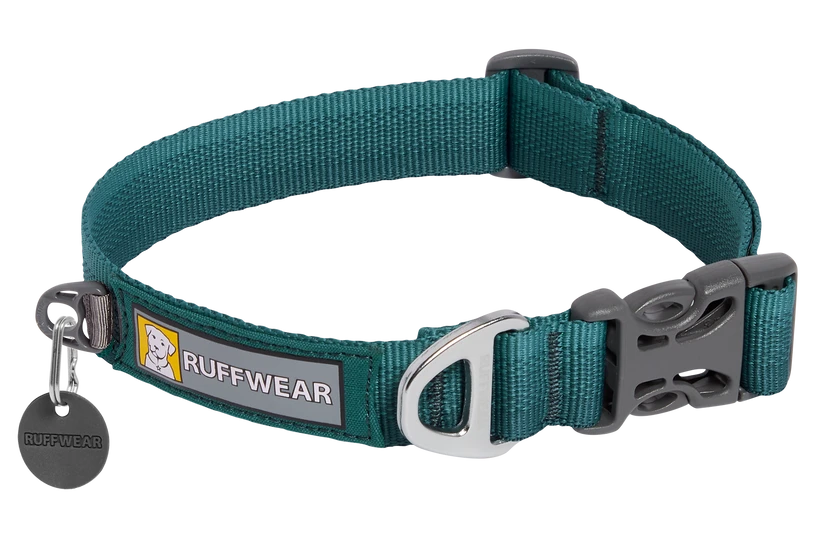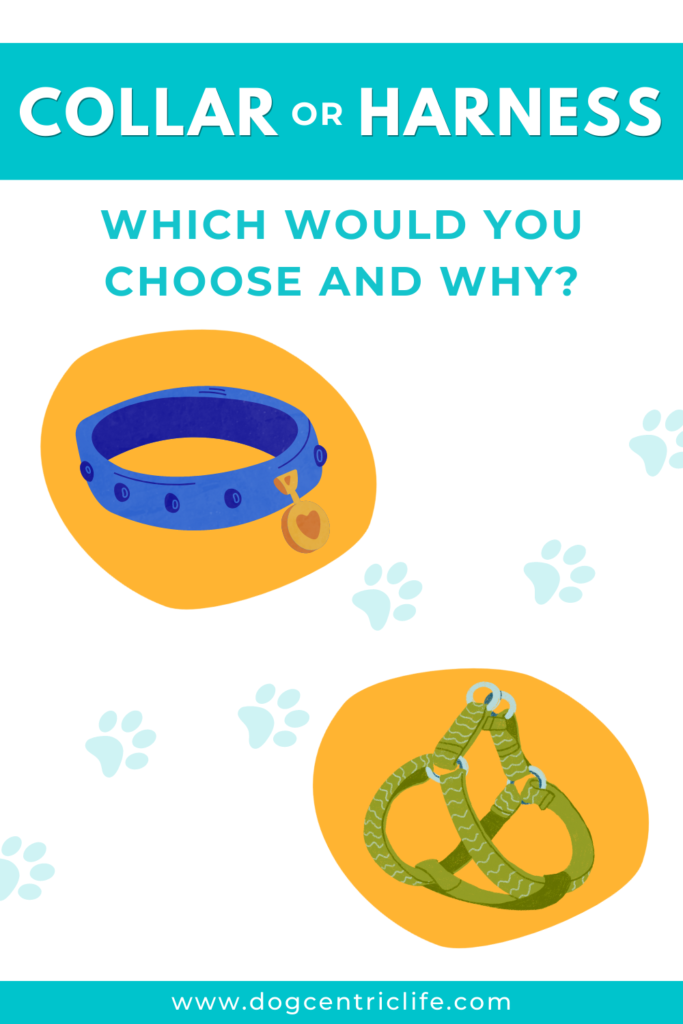Using a dog harness or collar is one of the hottest debates in the canine community. And, since you are here, I am assuming you have a dog that, like every other dog, needs to go for a walk. Which piece of equipment will you choose for your dog? Truth is, both collars and harnesses have pros and cons and it’s important you understand the benefits and potential challenges that each has before you make your final decision.
COLLARS

Pros
With such a wide variety of styles and materials of collars on the market today it’s a no wonder that most pet parents choose to use a collar for their dog. They can be simply a fashion accessory – making a bold statement in a world where we pamper our pooches and many pets have their own social media accounts. Collars, with the ease of attaching ID tags, are an easy and effective way to ensure you dog is easy to identify should they ever escape. Then there are those individuals that use collars as a piece of equipment in training and exercising their dog. Without a doubt, a collar is easy to use and convenient.
Cons
Whatever your intent is with your dog wearing a collar, it may not be the best, or safest, option for your dog.
Any time you put a collar on your dog and then apply pressure, even slightly, you risk potentially damaging your dog’s neck. Dr. Barbara Hodges, a veterinary advisor with the Humane Society Veterinary Medical Association says ”repeated stress on the neck can even lead to long-term medical issues—including damaging the thyroid glands and tissues around the neck area and salivary glands“. The neck is a very sensitive area and it doesn’t take much to cause serious damage to your dog.
If used for training a dog to walk on a leash, these collars can apply pressure on the delicate areas of your dog’s neck, (trachea, esophagus, thyroid gland, cervical vertebrae, etc.), and that is even if your dog is not a habitual puller. If your dog consistently pulls on the leash while walking, the risk of a collar causing damage to their neck is relatively high.
Dogs with small or tapered heads (such as Greyhounds and Whippets) can easily slip out of flat collars. This risk of escape opens the door for other dangers that coincide with a dog running loose and potentially getting hurt, or worse. Toy breeds, such as Chihuahuas, Chinese Crested, Italian Greyhounds, Maltese, Toy Poodles, Yorkshire Terriers, should not use collars as they are at a higher risk of tracheal collapse. You then have the brachycephalic breeds – the Bulldogs, French Bulldogs, Boston Terriers, Pugs, Boxers – being another group, that for breathing reasons, are best with choosing other options besides a collar.
HARNESSES

Pros
Originally, harness were primarily used in the sledding world but over the years they have become increasingly popular for our canine companions. Like collars, dog harnesses come in wide variety of styles and different materials. Using a harness for your dog removes any pressure from the neck and redistributes it across a larger area of the dog’s body. This reduces any discomfort for your dog and eliminates the same risk of injury to the dog’s neck/trachea that a collar potentially presents.
Generally speaking, dog harnesses also allow for better control than collars… harnesses with a front clip in particular.
It is however, important that you choose the right kind of harness for your dog. A harness that is sized and fit properly is not only more comfortable for most dogs, but it also reduces the risk of escape.
cons
Harnesses are definitely not as convenient as a collar. A collar is generally a simple click of a buckle, but a harness takes more time to fasten. Some harnesses don’t work as well for some breeds and can cause issues like physical restrictions of movement, in particular around the shoulder area, but also in the extension of the front legs. So it is important to ensure you have the right harness… and that it is fitted correctly.
If you have a dog with a long coat you may find that a harness contributes to tangles and mats which will mean that you may need to brush your dog’s coat more often. You may, or may not, find that a hassle. Alternatively, depending on the fit of the harness, a dog with a very short coat (i.e. Doberman) may develop chaffing – so looking for a harness that has some padding could be a better option in such cases. Depending on the material and weight of a harness, some dogs may find a harness warmer in hot weather.
Whichever way you go, knowing how to fit a collar or harness for your dog is important. Here is a video from the San Francisco SPCA that gives some tips and tricks you might find useful.
What do you use for your dog? Do you have a favorite brand that you would like to share with other readers?







0 Comments